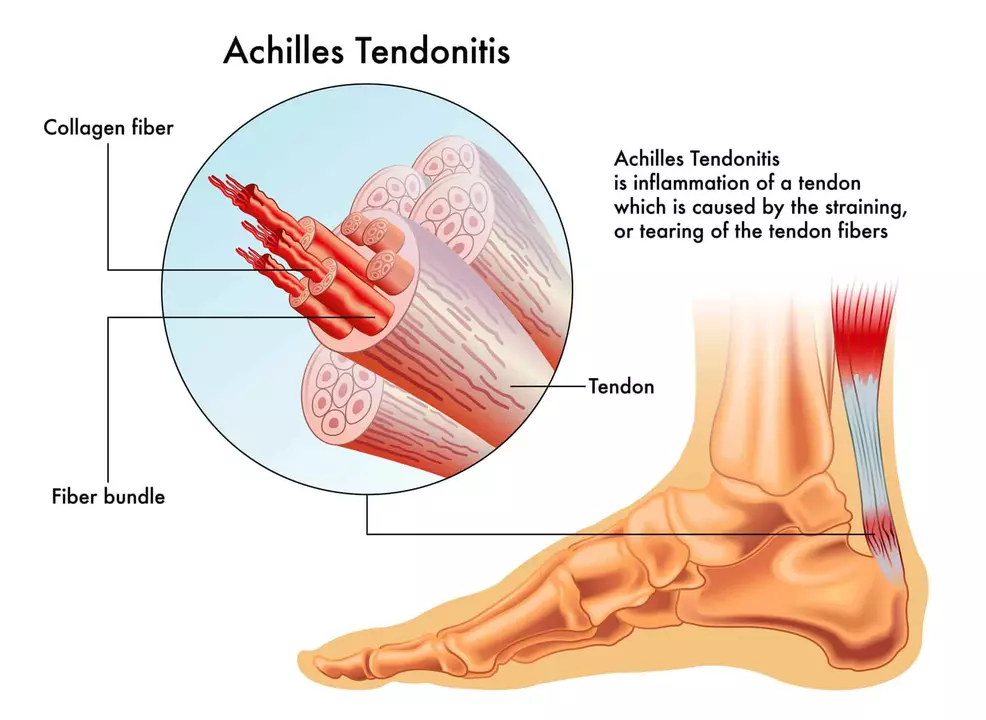Understanding Tendonitis and Tendinosis
In this section, we will discuss the basics of tendonitis and tendinosis. Both of these conditions affect tendons, which are the strong, flexible, fibrous tissues that connect our muscles to our bones. However, there are key differences between the two that are crucial to understand, as they can impact the appropriate treatment and recovery options.
Tendonitis is characterized by inflammation of the tendon, and is typically caused by overuse or repetitive stress on the tendon. This can result in pain, swelling, and reduced range of motion. Tendinosis, on the other hand, is a degeneration of the tendon's collagen due to chronic overuse and insufficient healing time. This condition can lead to chronic pain, stiffness, and weakness in the affected area.
It is important to know the difference between these two conditions, as they require different approaches to treatment and management. In the following sections, we will delve deeper into the differences between tendonitis and tendinosis, their causes, symptoms, and the best ways to treat them.
Unraveling the Causes of Tendonitis and Tendinosis
There are various factors that can contribute to the development of tendonitis and tendinosis. Both conditions are commonly caused by repetitive stress on the tendon, which can occur during activities such as sports, exercise, or work-related tasks that involve repetitive motions. This can lead to microtrauma in the tendon tissue, which may not have enough time to heal properly if the stress continues.
Other factors that can contribute to tendonitis and tendinosis include age, as tendons become less elastic and more prone to injury as we get older. Additionally, poor posture, muscle imbalances, and joint misalignment can place extra stress on tendons, increasing the risk of developing these conditions.
It is also worth mentioning that certain medical conditions, such as rheumatoid arthritis and diabetes, can increase the risk of tendonitis and tendinosis. Genetic factors may also play a role, as some people may have a genetic predisposition to developing these conditions.
Recognizing the Symptoms: Tendonitis vs. Tendinosis
While both tendonitis and tendinosis involve pain and discomfort in the affected tendon, there are some differences in the specific symptoms that can help distinguish between the two conditions. In general, tendonitis presents with sudden, sharp pain during activity, which may decrease with rest. There may also be swelling and warmth at the site of the affected tendon, as well as a noticeable creaking sound when the tendon is moved.
Tendinosis, on the other hand, typically involves a gradual onset of pain and stiffness that worsens over time. The pain may initially only be present during activity, but can eventually become constant and even occur at rest. Unlike tendonitis, there is usually no significant swelling or inflammation associated with tendinosis. Instead, the affected tendon may feel thickened and stiff, and there may be a loss of strength in the affected area.
It is important to consult with a healthcare professional if you are experiencing any of these symptoms, as a proper diagnosis is essential for determining the appropriate treatment and management strategies.
Effective Treatment Strategies for Tendonitis and Tendinosis
Treatment for tendonitis and tendinosis will depend on the severity of the condition, as well as the specific needs and preferences of the individual. In general, the initial treatment for tendonitis focuses on reducing inflammation and relieving pain. This may involve rest, ice, compression, and elevation (RICE), as well as over-the-counter anti-inflammatory medications, such as ibuprofen or naproxen.
Physical therapy is often recommended for both tendonitis and tendinosis, as it can help to address any underlying muscle imbalances or biomechanical issues that may be contributing to the problem. Strengthening exercises, flexibility exercises, and soft tissue mobilization techniques may all be used to help improve the function and health of the affected tendon.
For more severe or persistent cases of tendonitis or tendinosis, additional treatment options may be considered. These can include corticosteroid injections, platelet-rich plasma (PRP) injections, or even surgery in some cases. It is important to work closely with your healthcare provider to determine the best course of action for your specific situation.
Preventing Tendonitis and Tendinosis: Tips for Healthy Tendons
Prevention is always better than treatment, and there are several strategies that can help reduce the risk of developing tendonitis or tendinosis. One key factor is ensuring that you are engaging in regular physical activity that includes both strength training and flexibility exercises. This can help to maintain the health and function of your tendons, as well as address any potential muscle imbalances or joint misalignments that could contribute to tendon issues.
It is also important to practice good ergonomics at work and during daily activities, as poor posture and repetitive motions can place extra stress on tendons. Taking regular breaks, using proper body mechanics, and maintaining good overall posture can all help to minimize the risk of tendon problems.
Finally, be sure to listen to your body and give yourself adequate time to rest and recover between workouts or other activities that place stress on your tendons. Overtraining and insufficient recovery time are major risk factors for both tendonitis and tendinosis, so it is crucial to strike a balance between activity and rest to maintain healthy tendons.


Author
Mike Clayton
As a pharmaceutical expert, I am passionate about researching and developing new medications to improve people's lives. With my extensive knowledge in the field, I enjoy writing articles and sharing insights on various diseases and their treatments. My goal is to educate the public on the importance of understanding the medications they take and how they can contribute to their overall well-being. I am constantly striving to stay up-to-date with the latest advancements in pharmaceuticals and share that knowledge with others. Through my writing, I hope to bridge the gap between science and the general public, making complex topics more accessible and easy to understand.